Discover the signs, causes, effects, and withdrawal symptoms of inhalant use. The Camp Recovery Center offers treatment for inhalant addiction.
About Inhalant Addiction
Learn More About Inhalant Addiction
Inhalants are a category of common substances that can be abused by breathing in their vapors or fumes in order to experience a disorienting high. Paint, glue, and cleaning solutions are examples of the hundreds of substances that can be included in the general description of inhalants. Though several drugs, including cocaine and heroin, can be inhaled, the category of inhalants applies only to substances whose means of abuse is entirely, or almost entirely, limited to inhalation.
The National Institute on Drug Abuse, or NIDA, divides inhalants into four classifications, including aerosols, volatile solvents, gases, and nitrates. These groups are described briefly in the following:
- Aerosols include sprays, such as hairspray or spray paint, that contain propellants and solvents.
- Gases include household items, such as propane tanks or butane lighters, as well as medical substances, such as chloroform and nitrous oxide.
- Nitrites, such as amyl and butyl, expand users’ blood vessels, lower blood pressure, and increase heart rate. These types of inhalants are primarily used to enhance sexual experiences.
- Volatile solvents, such as paint thinners, gasoline, correction fluid, and glues, are liquids that vaporize when they reach room temperature.
Inhalant abuse, which is sometimes referred to as huffing, sniffing, or bagging, can produce an initial mind-altering effect that is similar to the impact of alcohol. This effect results from the fact that aerosols, gases, and volatile solvents act as central nervous system depressants. Individuals who abuse these inhalants may feel lightheaded or dizzy and may experience slurred speech, impaired coordination, and a lowering of inhibitions.
Though most inhalants can be found in households or workplaces, their prevalence should not be equated with safety. Inhalant abuse is a very dangerous behavior that can lead to a number of severe and debilitating outcomes. Thankfully, individuals who find themselves compelled to abuse inhalants can overcome this compulsion with effective professional treatment.
Statistics
Inhalant Addiction Statistics
Inhalant abuse is most common among adolescents, teenagers, and young adults. Experts estimate that as many as 30 million people have abused an inhalant at least once in their lives, with most having first done so between the ages of 12 and 17. Every year, about 590,000 adolescents and teenagers in the 12-to-17 age group will abuse an inhalant for the first time. By the time a student in the United States graduates from high school, he or she will have a one in five chance of having engaged in inhalant abuse.
Though inhalant abuse is most popular among adolescents and teenagers, adults over the age of 18 are not immune to this problem. Research conducted as part of the National Household Survey on Drug Abuse reveals that more than 60,000 adults engage in inhalant abuse to the degree that they should seek professional help.
According to the Drug Abuse Warning Network (DAWN), inhalant abuse contributes to about 10,000 visits to hospital emergency rooms or urgent care centers every year.
Causes & Risks
Causes and Risk Factors for Inhalant Addiction
Substance abuse and addiction can be caused by a variety of internal and external factors and is usually the result of a combination of influences. Mental health experts who have studied the genesis of addiction have identified several genetic and environmental precursors, including the following:
Genetic: Family history is one of the strongest predictors of whether or not a person will engage in substance abuse and possibly become addicted. This genetic predisposition to substance use disorders is as applicable to inhalants as it is to any other substances of abuse. When a person has a parent or sibling with a substance abuse problem, that person is three to five times more likely to experience a similar problem than is an individual who does not have a family history of drug abuse or addiction. As DNA research has improved significantly in recent years, scientists have identified several individual genes and gene clusters that they believe may be influential in determining a person’s potential for developing a substance use disorder.
Environmental: Whether or not a person has an increased genetic risk for developing a substance use disorder, he or she may be influenced into engaging in substance abuse by external or environmental factors. For example, young people who have endured child abuse or neglect may engage in substance abuse to numb themselves to their emotional pain and may specifically choose to abuse inhalants because they are easily accessible. In such a case, both the abuse and the access to inhalants can be considered environmental precursors to the inhalant abuse. Having parents who abuse drugs or who struggle with mental illness can also be environmental influences, as these parents may be less attentive, may not model appropriate behaviors, and may add elements of tension and pressure to the house that a person may want to escape from via substance abuse.
Risk Factors:
- Prior abuse of another substance or substances
- Personal experience with mental illness
- Family history of substance abuse and addiction
- Family history of mental illness
- Being abused and/or neglected as a child
- Being attacked, assaulted, or otherwise victimized as an adolescent or adult
- Early exposure to substance abuse
- Low self-esteem and poor coping skills
- Suffering the loss of a family member, close friend, or other loved one
- Living in poverty
- Being a teenager
Signs & Symptoms
Signs and Symptoms of Inhalant Addiction
With literally hundreds of substances in the category of inhalants, the signs and symptoms that may indicate their abuse can vary widely in terms of appearance, duration, and severity. However, the following are among common signs that may indicate that a person is struggling with a compulsion to abuse an inhalant or several inhalants:
Behavioral symptoms:
- Engaging in risky, dangerous behaviors
- Acting in a belligerent manner
- Slurring speech
- Swaying, stumbling, or otherwise demonstrating poor motor control
- Possessing large quantities of glue, aerosols, paint, or other inhalants
- Spending excessive amounts of time in the garage, basement, or other secluded location
- Lying about whereabouts and activities
- Withdrawing from family or friends
Physical symptoms:
- Dizziness
- Drowsiness
- Glassy or watery eyes
- Runny nose
- Spots or sores around the mouth
- Irregular heartbeat
- Shallow or otherwise irregular respiration
- Nausea and vomiting
- Headaches
- Delayed reflexes
- Muscle weakness
- Lack of hygiene
Cognitive symptoms:
- Confusion and disorientation
- Poor coordination
- Inability to focus or concentrate
- Forgetfulness
- Poor judgment
Psychosocial symptoms:
- Mood swings
- Unprovoked anxiety, agitation, or anger
- Anhedonia
- Apathy
- Excitability and restlessness
Effects
Effects of Inhalant Addiction
Given the powerful properties of many inhalants, significant and potentially irreversible damage can occur both from a single use and from chronic abuse. As with the signs and symptoms, the effects of inhalant abuse may vary widely depending upon the specific inhalant being abused, the length of time the person has been engaging in this behavior, and the presence of any other mind-altering substances. The following are among the many damaging effects that have been associated with the abuse of inhalants:
- Cardiac arrest
- Brain damage
- Liver damage
- Kidney failure
- Respiratory distress
- Vision damage, including blindness
- Intestinal inflammation
- Muscle atrophy
- Ulcers
- Hearing loss
- Anemia
- Mania
- Hallucinations and delusions
Co-Occurring Disorders
Inhalant Abuse & Co-Occurring Disorders
Adolescents, teenagers, and adults who engage in inhalant abuse may also be dealing with one or more co-occurring mental health disorders. The following are examples of disorders that have been known to occur alongside inhalant use disorder:
- Antisocial personality disorder
- Attention-deficit/hyperactivity disorder (ADHD)
- Oppositional defiant disorder (ODD)
- Bipolar disorder
- Major depressive disorder
- Persistent depressive disorder
- Other substance use disorders
Withdrawal
Effects of Inhalant Withdrawal & Overdose
Effects of inhalant withdrawal: Abrupt cessation or drastic reduction of inhalant abuse can lead to the development of a number of unpleasant symptoms in individuals who have been engaging in chronic or long-term inhalant abuse. These withdrawal symptoms can include the following:
- Profuse perspiration
- Nausea
- Cramps and chills
- Agitation and irritability
- Headaches
- Tremors
- Convulsions
- Hallucinations
- Powerful cravings for inhalants
Effects of inhalant overdose: Inhalant abuse is always accompanied by the risk of overdose. Inhalant overdose can lead to irreversible damage, including death. Anyone who exhibits the following signs after abusing an inhalant should be brought to the immediate attention of a qualified professional, such as a doctor or emergency medical technician:
- Nosebleed
- Irregular heartbeat
- Cardiac arrest
- Severe trouble breathing
- Vomiting
- Hallucinations and delusions
- Loss of consciousness
















